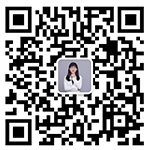Bluetooth Low Energy Controller Test best tws bluetooth earbuds
Bluetooth Low Energy Controller Test best tws bluetooth earbuds
Receiver test
Compared to transmitter testing, receiver testing is much simpler. The receiver test is mainly used to determine the bit error rate of the receiver under different transmit power conditions. Under normal circumstances, the lower test equipment transmits with a known power, the device under test receives, and the two are connected by a radio frequency line, so as to avoid the influence of the uncertain path loss. The device under test counts the correctly received packets, and reports this information to the upper test device at the end of the test. The upper test equipment can determine the number of erroneous packets, thereby estimating the bit error rate of the receiver under a specific signal strength. The upper test equipment sends a specific command to make the device under test enter the receiver test mode. This command has only one parameter, that is, the center frequency of reception, which is represented by the RF channel number just like the transmitter test. After receiving the command, the device under test clears the message counter and starts to prepare to receive. www.bjbjaudio.com <a style="opacity:0.0;color:#ffffff">best tws bluetooth earbuds</a>
After the receiver receives a valid message, it increments the message counter by 1. The device under test repeats this process until the upper test device commands it to stop. Once a stop command is received, the device under test shall immediately stop receiving and return an event confirming that it is no longer receiving. This event contains the number of valid packets received by the device under test. The upper test equipment can calculate the performance of the receiver based on the number of transmitted and received packets. After that, the upper test equipment can carry out the next test, such as using a different frequency or a different transmit power. www.bjbjaudio.com <a style="opacity:0.0;color:#ffffff">best tws bluetooth earbuds</a>
hardware interface
Considering that the controller may come from many different manufacturers, in order to perform efficient and device-independent module testing, the Bluetooth low energy standard specifies the hardware interface between the device under test and the upper test device. The interface is a simple two-wire serial port, one wire transmits the signal from the device under test to the upper test device, and the other wire is the opposite. If the manufacturer of the module or the final product can lead out these two pins or test points for connecting to the upper test equipment, the transmit and receive capabilities of each product can be calibrated or verified on the production line. <a style="opacity:0.0;color:#ffffff">best tws bluetooth earbuds</a>
www.bjbjaudio.com <a style="opacity:0.0;color:#ffffff">best tws bluetooth earbuds</a> <a style="opacity:0.0;color:#ffffff">best tws bluetooth earbuds</a>
serial port
The configuration of the serial port is usually very flexible. In order to ensure compatibility, the direct test mode only allows to modify one parameter of the serial port: baud rate. The baud rate of the device under test can be selected from the following values: 12002400960014400192003840057600115200. A common baud rate is 38400, which is a reasonable compromise between the transmission efficiency of command events and the cost of implementation. <a style="opacity:0.0;color:#ffffff">best tws bluetooth earbuds</a> <a style="opacity:0.0;color:#ffffff">best tws bluetooth earbuds</a>
Other serial port parameters use the most commonly used settings: 8-bit data, no parity, and 1 stop bit. There is no hardware or software flow control. Hardware flow control is obviously not possible because there is no hardware wiring for flow control. Software flow control is also unnecessary because commands are only 2 bytes long and only one command can be sent at a time. The final design parameter is the common ground, that is, the signal grounds of the two devices are required to be connected together. When sending commands or events, the maximum time interval between 2 bytes of data is 5ms. After a command is sent, the corresponding event must return within 50ms. This is to ensure that the device under test can start or stop the test in time to ensure counting accuracy. www.bjbjaudio.com
